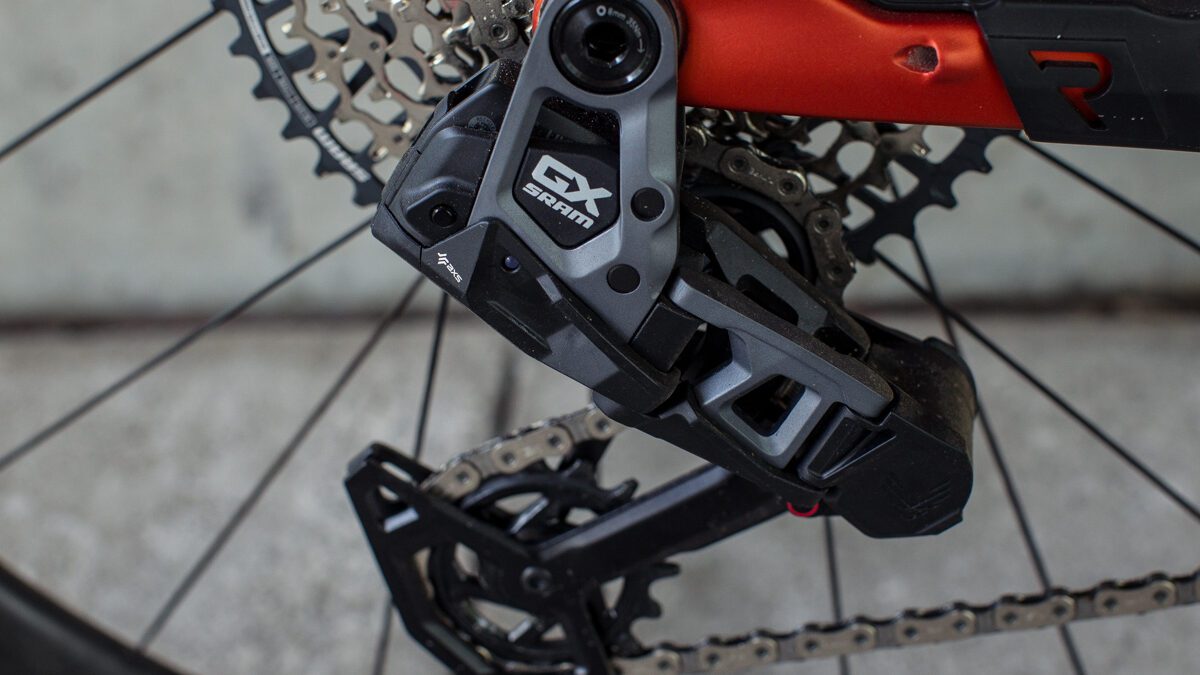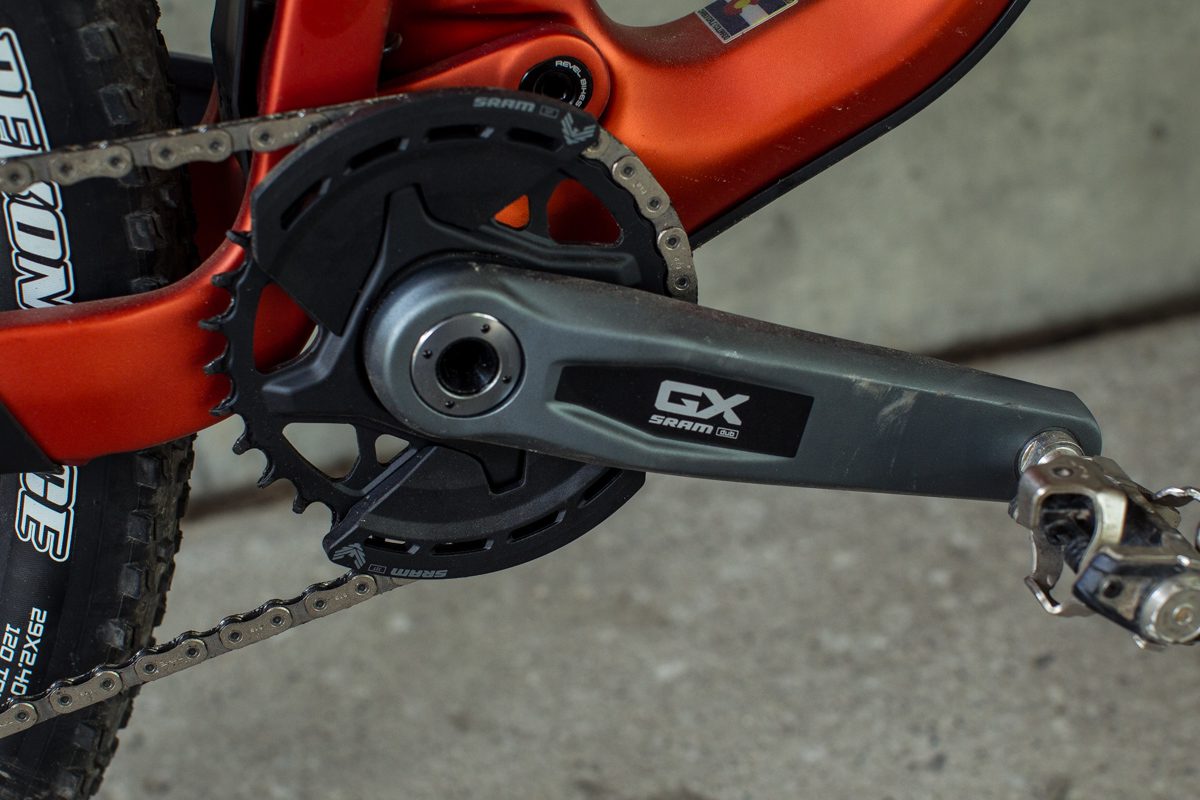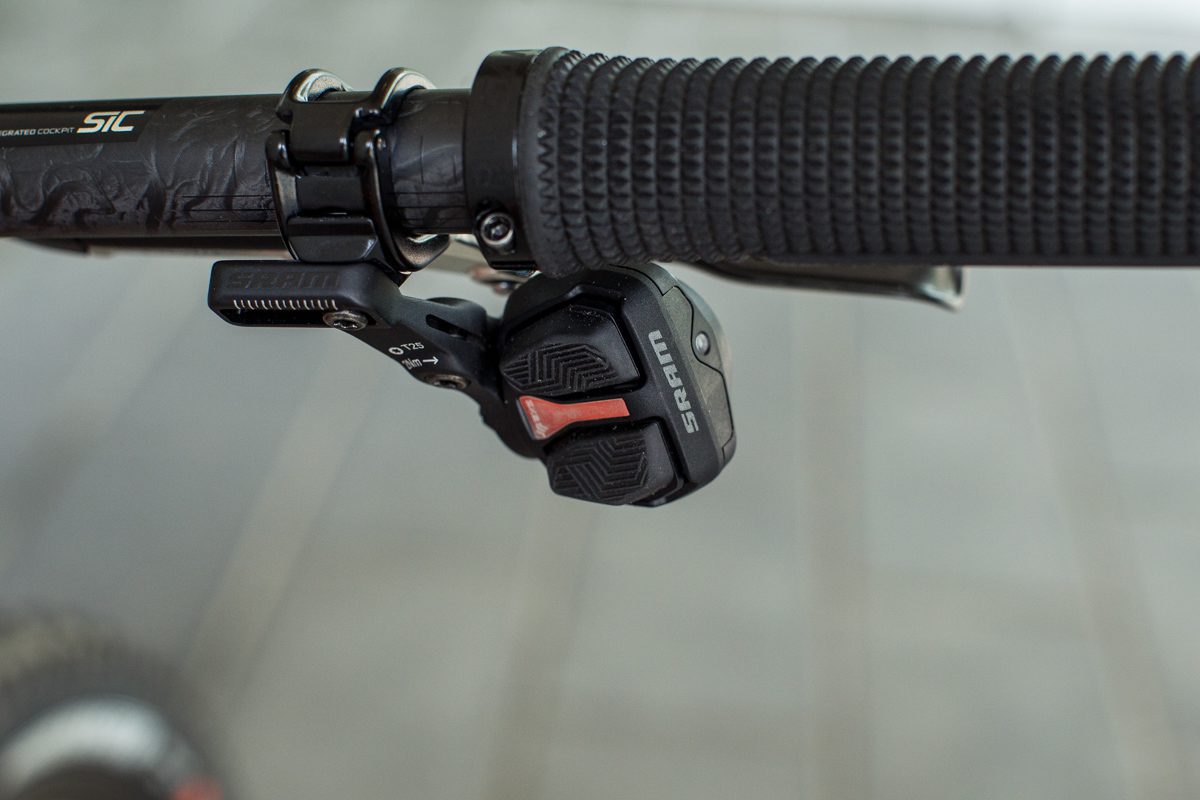Review: Can SRAM GX Transmission live up to the hype?
Trail testing the price-point version of a revolution in shifting technology
 Photo by:
Matt Stetson
Photo by:
Matt Stetson
When SRAM released its new direct-mount design, it hailed the wireless group as a revolution. A massive change in how riders shift gears. We got ahold of a GX level transmission from SRAM to review to see for ourselves. Is doing away with the derailleur hangar worth the hype?
This newest GX version of Transmission launched in July. It followed quickly on the heels of the more expensive versions (XO, XX and XXSL) which came out this past March.
I built up our GX Transmission on a Revel Ranger V2 test bike. In the months since I’ve used GX for several months of riding in Ontario and over an intense eight days of racing at BC Bike Race.
How is Transmission different?
Unlike past drive trains the Transmission mounts directly to the frame with no derailer hanger. This is at first disconcerting after all hangers are designed to break when a big impact occurs, instead of the frame or derailleur breaking. To alleviate our fears, SRAM had videos of staff jumping up and down on the derailer to show it is so tough it won’t break. That goes some distance to also ensuring your bike runs smoothly. I struck the derailer at least once hard and the shifting was not affected. There is also an overdrive or crash mode, which allows GX to move inboard when impacted without damaging the internals. Still, I am still left wondering what will break on big impacts. Only time will tell, however the derailer is highly fixable with a number of replaceable parts.

GX vs XO: What’s the difference?
Out of the box, GX looks similar to the XO except for a few clear differences. Firstly the aluminum chain ring and crank arms look different in shape and colour than the higher-end groups, without any of the cut-outs and much less shaping. GX comes with a bash guard already installed. Secondly, the derailleur battery has been moved from the back of the derailleur hanger to sit more inside the derailleur and under the axle, hopefully putting it out of harm’s way.
Those are the two most visible changes, but there’s also an increased weight. You can see where SRAM’s added weight in several locations. The cranks are heavier, the derailleur is heavier, the chain is heavier and the cassette is heavier. The shifting pods I received were the same as the XO model, so not much I can comment on there, but weight-wise wise they will be the same. Overall the GX group is 112.9 grams heavier as a package than the XO version.

Compatibility and weights
Like other levels of Transmission, the cassette is only compatible with SRAM 12-speed flattop T-type chain. It uses the new 38-44-52 jump, which is a change from old Eagle groups to provide tighter gearing jumps in the easier gears. This makes the jumps between gears more reasonable at that end of the range. For XO and XX cassettes, the smallest 9 cogs are machined out of one piece of steel and the top three are pinned. On GX only the bottom three are machined and the top nine are pinned. That makes for quite a less expensive cassette. This change in construction only makes GX 66 grams heavier than XO.
The cranks have the addition of the bash guard, forged from aluminum, and use the same eight-bolt configuration as XX and XO. The cranks come in three lengths: 165mm, 170mm and 175mm. Chain rings are either 30, 32 or 34-tooth. I chose 170mm which was new for me and resulted in a lot fewer crank arm strikes. Again this part of GX is heavier and frankly looks less elegant than XO or XX.
In order to use the Transmission you must have a UDH-compatible bike, like the Revel and many other brands. A complete list of UDH frames can be found on SRAM’s website.

Review: SRAM GX Transmission trail tested
As someone new to the group, there were a few notable differences from other drivetrains. Once set up the derailer is at an angle, which is unexpected. At first, I thought of straightening it. It required some research to realize that, yes, it is supposed to be at an angle and efforts to straighten it would be futile. Secondly, this angle of the derailer is what makes the shifting under load so great. I had heard and read that the more force you put into the pedals when shifting, the smoother the shifting is. This proved to be true. This is mostly because as you shift the angle of the derailer allows for the chain to be on two cassette cogs simultaneously. That effect is that there is no pause or dead spot in the shift. While this does cause you to unlearn soft pedaling when shifting, it does make those quick transitions from descending to steep climbs much easier to attack and easier for racers to shift while attacking. All in all the shifting worked great. The harder I pedaled the quieter the shifting became.
Thirdly there are no tension or limiter screws (but there is a micro-adjust in the AXS app and on the shifter pods) which means setup is simple as there is nothing to adjust, and it will shift crisply out of the box. There were occasional mis-shifts, and I did drop my chain at least once during testing, but overall the transmission will change the way I ride. Will all this shifting under load shorten the life of the drive train? This is yet to be determined, but so far so good.

The AXS app
While the shifting does work great, it comes programmed for one shift per activation. This can be changed with the AXS app. It allows for two, three or infinite shifts when you hold the button. But, no matter how the shifting is programmed, I did find there is a slight delay after the first two gear changes. The system cues and staggers shifting instead of allowing you to shift across the whole cassette, or large parts of it all in one go. This can occasionally make it tricky to be sure how far you’ve shifted until you adjust to the delay. It’s not a big deal and something I got used to pretty quickly. Especially since T-Type’s shifting under load is so good that you can keep pedaling as the derailleur catches up. But it is different.
The verdict
The GX transmission works like a charm. Yes, it is heavier but it is also significantly cheaper. MSRP for the GX transmissions is $1,600 vs XO at $2,350 and the XX at $3,000. For most who are looking to upgrade to the new direct-mount system, the GX will prove to be more than enough. Other than some additional weight and possibly durability (not to be determined for some time still) the GX offers outstanding performance. For me, it will probably change the way I approach shifting while riding.
